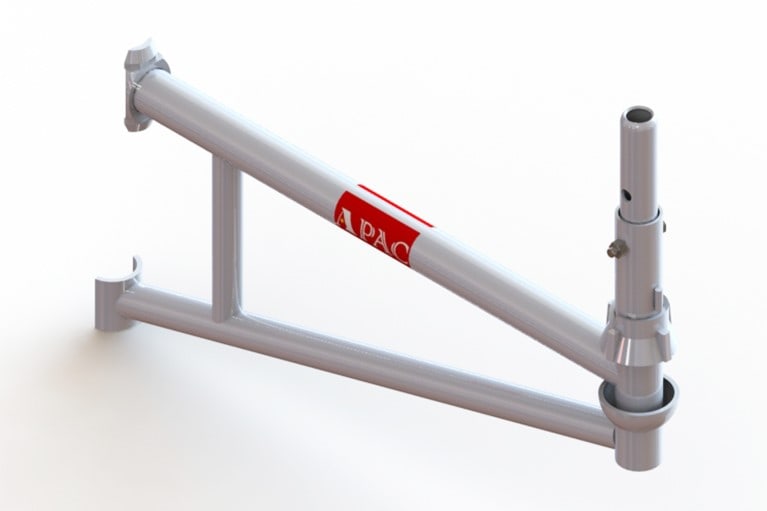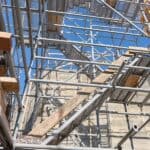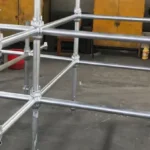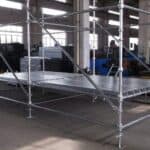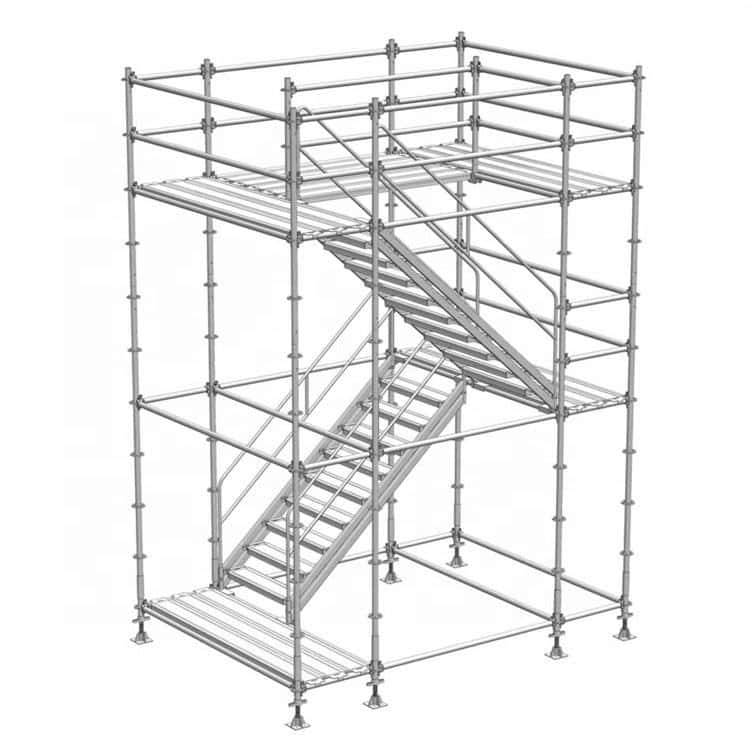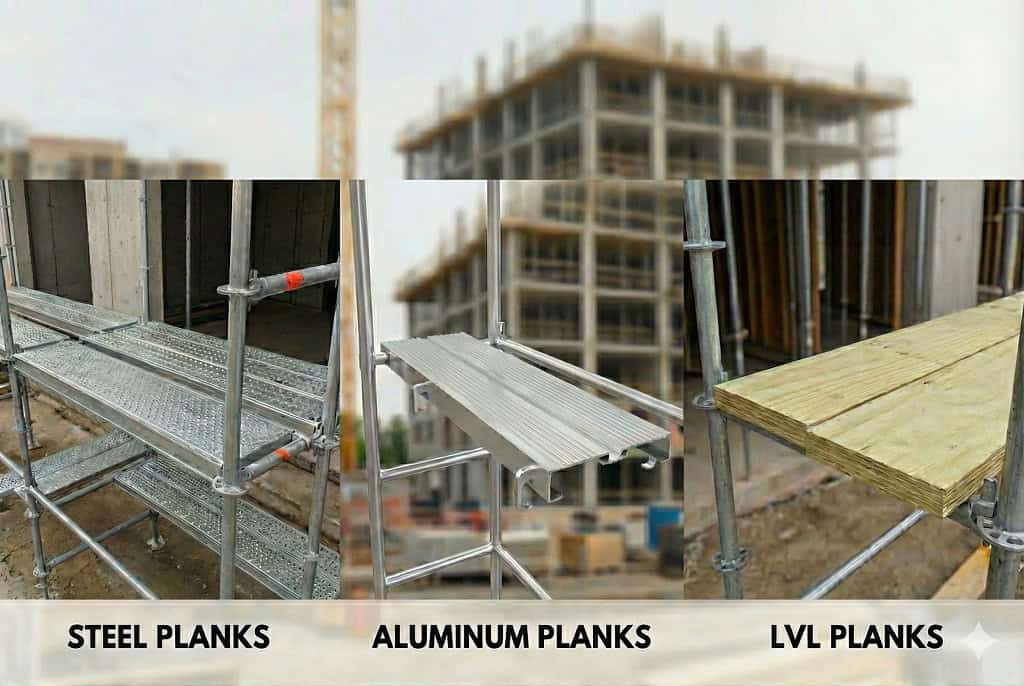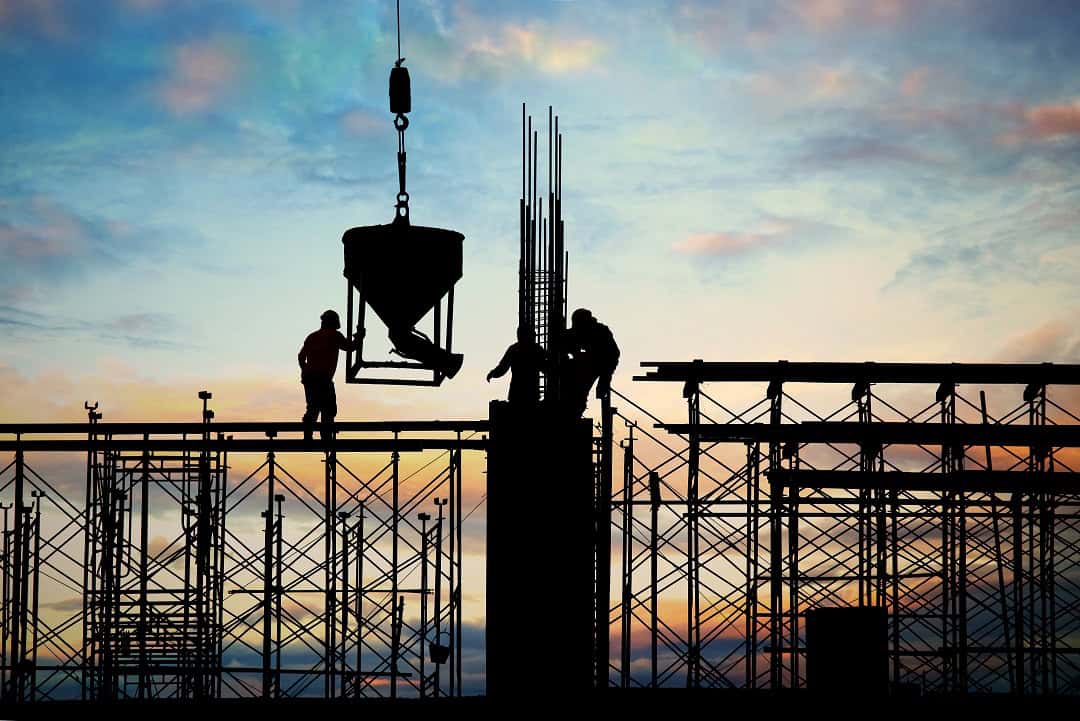What Is Cuplock Scaffolding?

Cuplock scaffolding is a popular system used in construction. This system is strong, easy to use, and flexible. The key feature is its unique locking system. It uses “cups” and “blades” or “nodes” to connect parts.
The locking system is simple and effective. Vertical standards are the main parts that hold the weight. They have cup joints welded at regular intervals. Horizontal ledgers and diagonal braces provide support. These parts have blades at their ends.
The blades fit into the cup joints on the vertical standards. A hammer locks the blades into the cups. This makes the connection strong and stable. This system does not need loose fittings, making it quicker and easier to set up.
Cuplock scaffolding can be adjusted to fit different projects. Its modular design allows it to fit various heights and shapes, making it suitable for many applications. This flexibility is why it is so popular in construction.
Cup lock Scaffolding Parts and Main Components
Cuplock scaffolding has several important parts. Each part helps make the structure strong and stable. Here are the main components:
Vertical Standards (Standards): These are the main load-bearing parts. They are vertical tubes that come in different lengths. They have cup joints at regular intervals. These cup joints are where horizontal and diagonal parts connect.
Horizontal Ledgers (Ledgers): Ledgers are horizontal tubes that connect to the vertical standards. They provide sideways support and form the horizontal framework of the scaffolding. Ledgers have blades on both ends that fit into the cup joints on the standards.
Diagonal Braces (Braces): Diagonal braces add extra stability. They connect the vertical standards and the horizontal ledgers, forming a triangular shape that strengthens the scaffold.
Cuplock Joints (Cups and Blades): The unique feature of Cuplock scaffolding is its locking system with cups and blades. The cups are welded onto the vertical standards at regular intervals. The blades are at the ends of the ledgers and braces and fit into the cups. A hammer locks the blades in place, making the connection quick and firm.
Base Plates and Sole Boards: Base plates are attached to the bottom of the vertical standards. They help distribute the load and provide stability. Sole boards are placed under the base plates. They prevent the base plates from sinking into soft ground and help spread the load evenly.
Intermediate Transoms (Transoms): Transoms are horizontal tubes that span the width of the scaffold. They provide extra support for the working platform. They connect to the ledgers and help distribute the load across the scaffold.
Decking Components (Planks and Boards): The working platform uses planks or boards. These are placed on the ledgers and transoms. The planks provide a safe and stable surface for workers to stand on.
Toe Boards: Toe boards are installed along the edges of the working platform. They prevent tools and materials from falling off the scaffold. They are an essential safety feature.
Cup Lock Scaffolding Applications and Uses
Cuplock scaffolding is very versatile. It is used in many types of construction and maintenance projects. Here are some common applications and uses:
- Cuplock scaffolding is widely used in building construction. It provides access to different levels of a building. Workers use it for bricklaying, plastering, painting, and installing windows and doors. Cuplock scaffolding can be easily adjusted to fit different building designs and heights.
- Cuplock scaffolding is strong and stable, making it suitable for bridge construction and repair. It can create temporary support structures for workers and materials, ensuring safe and efficient access to various parts of the bridge.
- In industrial settings, Cuplock scaffolding is used to maintain and repair of large structures. These include chimneys, silos, and storage tanks. Cuplock scaffolding provides stable and secure working platforms at different heights. This makes it ideal for these applications.
- Cuplock scaffolding is also used in the event industry to construct temporary stages, grandstands, and other structures. Its quick assembly and disassembly make it a popular choice for temporary setups.
- Cuplock scaffolding is great for facade work. This includes tasks like cleaning, painting, and maintenance. It provides safe and efficient access to all parts of a building’s facade.
- Cuplock scaffolding can be used as a support system for formwork in concrete construction. It provides the necessary stability and strength to support the formwork during the concrete pouring and curing.
- Cuplock scaffolding is used for construction, maintenance, and repair in shipyards. Its modular design allows it to fit the contours of the ship’s hull, providing safe access for workers.



